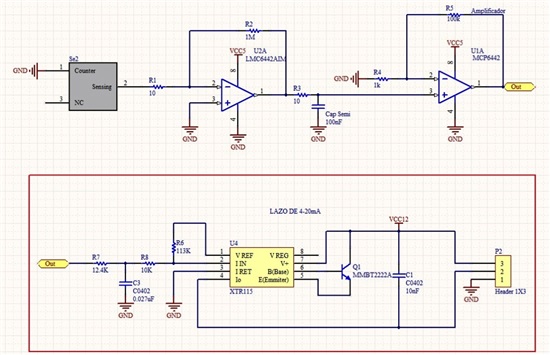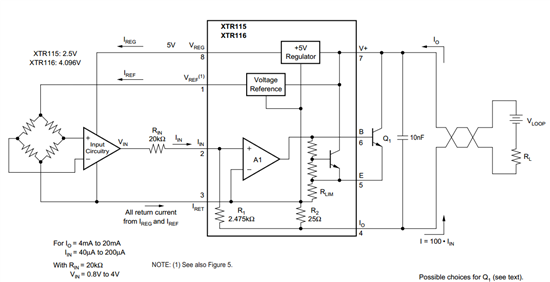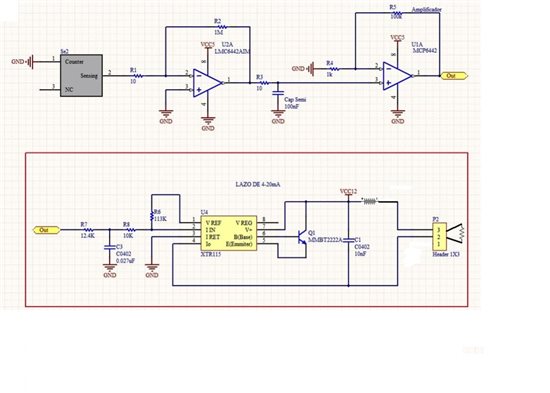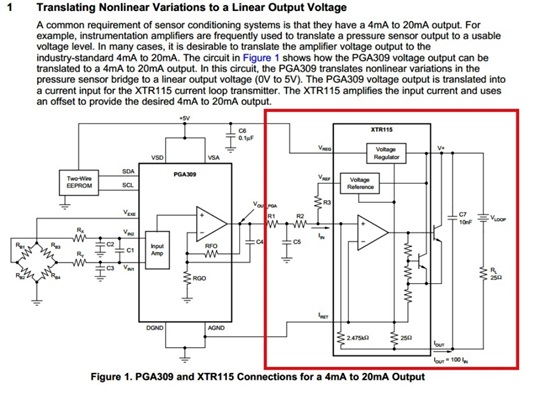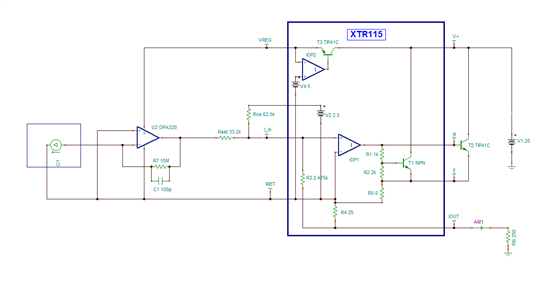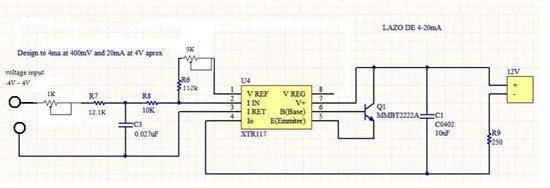im trying to use this XTR115 but i dont know how to implement it or i have an idea but i doesnt work for me. I have a voltage range between 400mV to 3V from a Non Inverter Amplfication layer. I attached the way that im using it... but i always get an output current of 0mA.
So, i dont know if my trouble is of design, or maybe i dont know how to measure the current (i put the Tester's points parallel to te Capacitor of 10nF).


